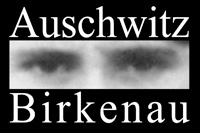




Tattooing
Auschwitz was the only German concentration camp where the prisoners were tattooed with their camp numbers. In the autumn of 1941 the camp administration decided to mark Soviet POWs this way. Initially the number was tattooed on the left side of the prisoner’s chest. Polish prisoners transferred to Birkenau from Auschwitz I in March 1942 were tattooed in the same way, as well as Jews arriving in the first transports. From the spring of 1942 the camp authorities ordered that incoming prisoners be tattooed on the left forearm. Jewish men arriving in new transports were marked in this way, together with Jewish women already incarcerated in the camp. At the start of 1943 the tattooing of non‑Jewish women prisoners began, and in the spring, men prisoners already registered in the camp as well as the new arrivals were tattooed like that. Aside from numbers, some groups of prisoners were tattooed with additional symbols such as Z[igeuner] for Roma, A for Jewish men and women arriving in May 1944 and later, and finally B for Jewish men only.
German and Austrian prisoners, so-called reeducation prisoners, police prisoners (block 11), and Poles deported in the summer of 1944 from Warsaw during the Uprising (Warsaw Uprising) were not tattooed. Neither were Jews held “temporarily” in Birkenau since May of that year, awaiting transfer to other camps in the Reich.
